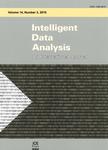版权所有:内蒙古大学图书馆 技术提供:维普资讯• 智图
内蒙古自治区呼和浩特市赛罕区大学西街235号 邮编: 010021

作者机构:Amirkabir Univ Technol Dept Comp Engn & IT Tehran Iran Amirkabir Univ Technol Dept Elect Engn Tehran Iran
出 版 物:《INTELLIGENT DATA ANALYSIS》 (智能数据分析)
年 卷 期:2014年第18卷第3期
页 面:465-477页
核心收录:
学科分类:08[工学] 0812[工学-计算机科学与技术(可授工学、理学学位)]
主 题:Wyner-Ziv (WZ) video coding bitrate estimation support vector regression feature extraction encoder rate control
摘 要:A recent trend in video coding is toward the low-complexity distributed techniques which provide an adaptive way to distribute the computational complexity among the encoder(s) and the decoder. One of the well-known architectures for Distributed Video Coding (DVC) is the Stanford architecture. This structure imposes the presence of a feedback channel from the decoder to the encoder, causing the codec to be impractical in some applications. However, the feedback channel can be eliminated if the encoder estimates the desirable bitrate during the encoding process. In this paper, we introduce a new method for bitrate estimation using v-SVM regression with the aid of a novel set of features. We also present a Hybrid coding mode which reduces the computational complexity in a conventional Stanford codec. The presented methods are evaluated using three different video sequences. The simulation results for the feedback-free method show that the average decrease in PSNR of the decoded frames is 0.7 dB for low-motion and up to 3 dB for high motion videos. While preserving the same PSNR quality as the conventional Stanford codec, the Hybrid method reduces the computational complexity by a factor 3, thereby speeding up the decoding process by imposing an overhead bitrate of 3 kb/s.